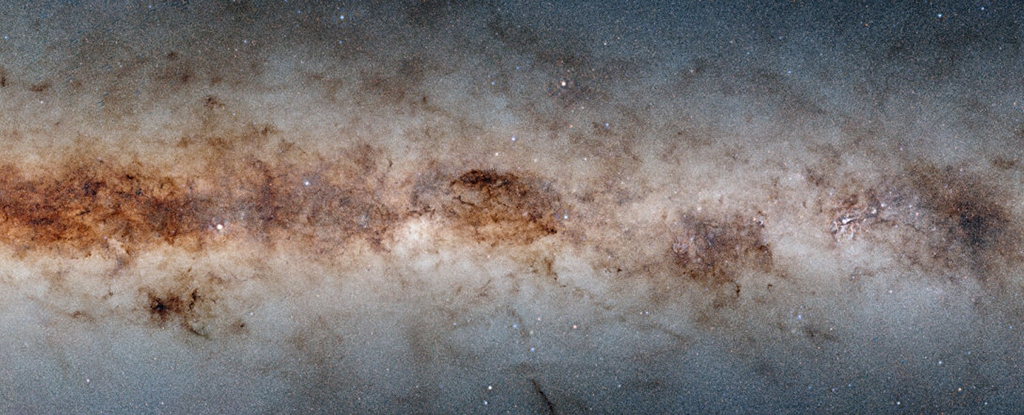If you check ScienceAlert regularly, you’ll know a few stunning space imagesbut a newly released image has to be one of the best yet: 2 years in the making, 10 terabytes of data, 21,400 frames combined, and a final image showing a whopping 3.32 billion celestial objects.
We have that Dark energy camera (DECam) for this beautiful image of space, part of the Víctor M. Blanco 4-meter telescope at the Cerro Tololo Inter-American Observatory (CTIO), about 2,200 meters (7,218 ft) above sea level in Chile.
The image was released as part of the Dark Energy Camera Plane Survey (DECaPS2) and gives us more detail than ever about this part of space – it makes up about 6.5 percent of the entire night sky and is centered on the galactic plane of the Milky Way, where most of the galaxy’s mass resides.
“One of the main reasons for the success of DECaPS2 is that we simply pointed to a region with an exceptionally high density of stars and were careful to identify sources that appear almost on top of each other.” says astronomer Andrew Saydjari from Harvard University in Massachusetts.
“In this way, we were able to create the largest single-camera catalog of its kind in terms of the number of objects observed.”
This high density comes with some problems: the huge plumes of space dust and the glow from brighter stars can completely block out the light from fainter objects. By measuring both optical and near-infrared wavelengths, DECam overcomes these problems.
The team also used a special data processing technique to better estimate what each star’s background should look like, allowing more stars to be observed with greater clarity and improving the overall accuracy of the image.
In combination with other sky surveys – like the Pan-STARRS project – The latest telescopic technology is giving us unprecedented views of the universe beyond our planet, which of course gives us clues as to how it formed.
“Combined with images from Pan-STARRS 1, DECaPS2 completes a 360-degree panoramic view of the Milky Way’s disc and also reaches much fainter stars,” says astronomer Edward Schlafly from the Space Telescope Science Institute in Maryland.
“This new survey will allow us to map the three-dimensional structure of the Milky Way’s stars and dust in unprecedented detail.”
The results are simply fantastic and more than worth the two-year wait. The data collected in the survey is available for free for other researchers and the general public to use.
DECam was originally built to a Dark Energy Investigate and better understand this mysterious force believed to power the universe. It will continue to be produced amazingly detailed Images from space, and many more to come.
“It’s quite a feat of engineering,” says astronomer Debra Fischer by the National Science Foundation (NSF) in the US, which was not directly involved in the research. “Imagine a group photo of over three billion people, and every single individual is recognizable!”
“Astronomers will be poring over this detailed portrait of more than three billion stars in the Milky Way for decades to come. This is a fantastic example of what federal agency partnerships can achieve.”
The research was published in the Astrophysical Journal Supplement Series.





